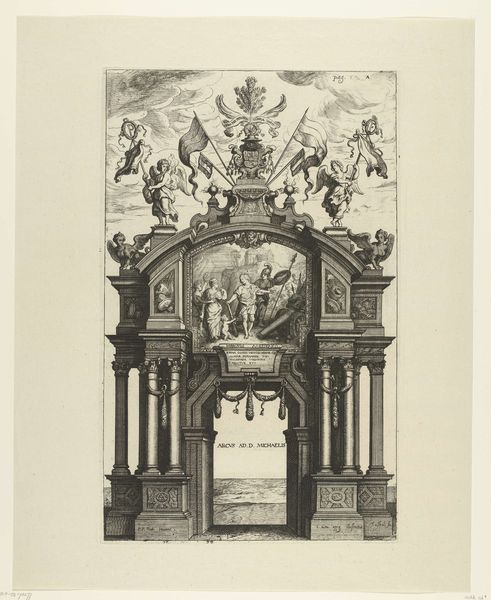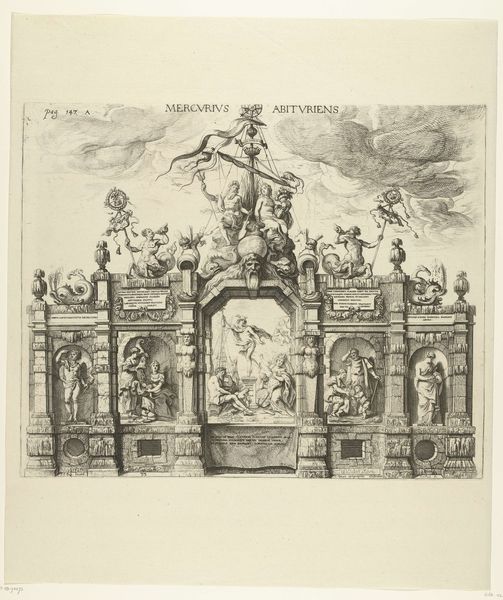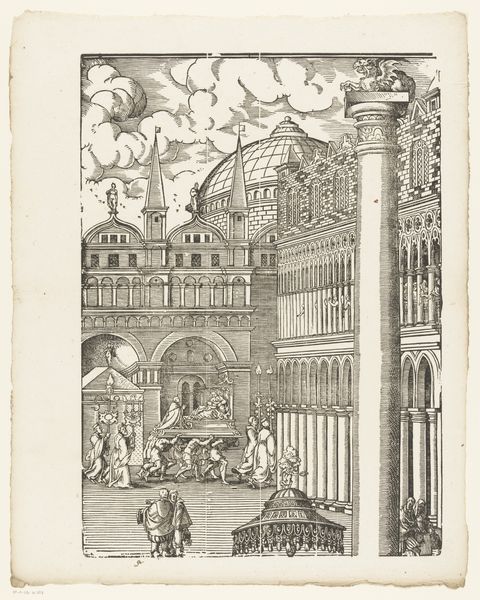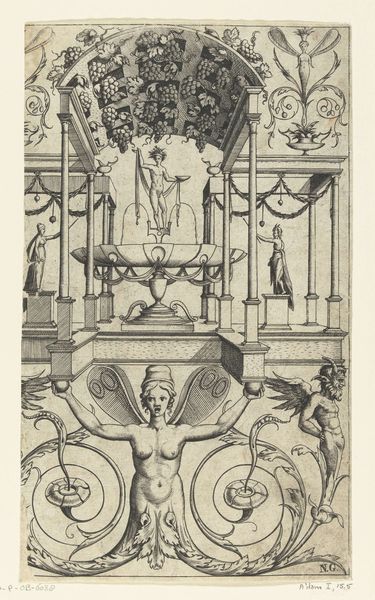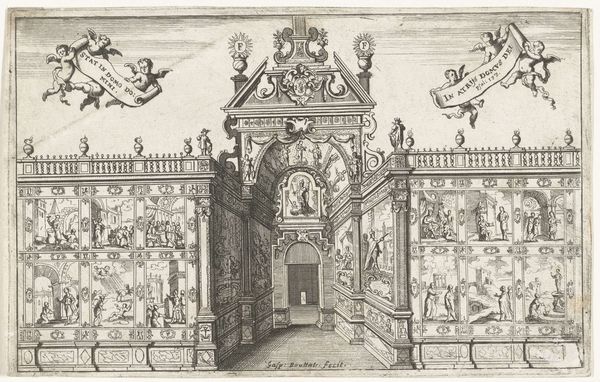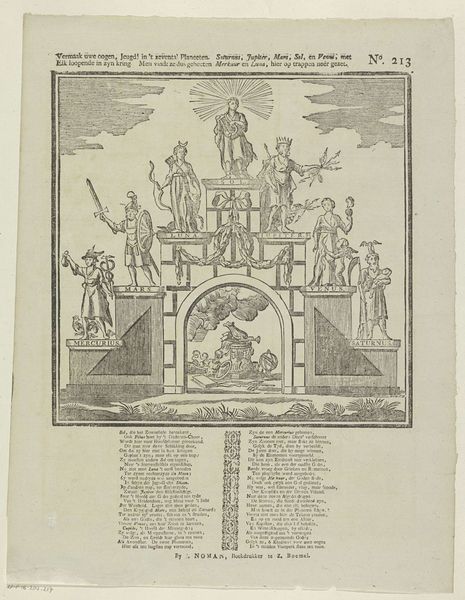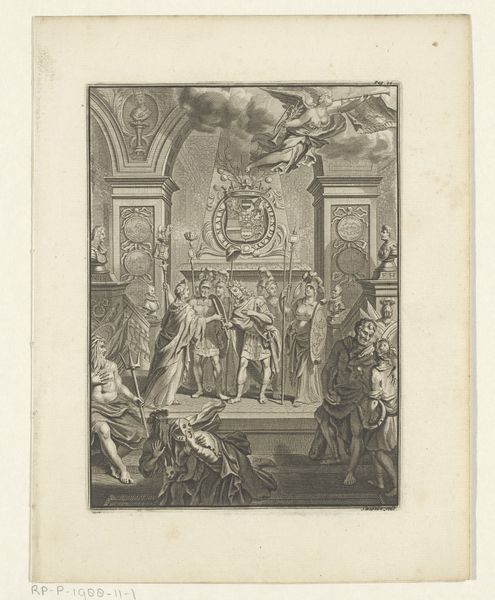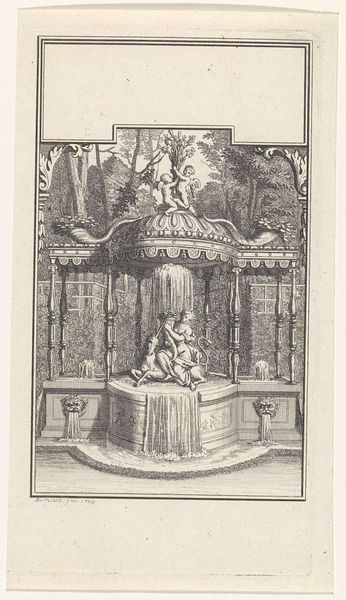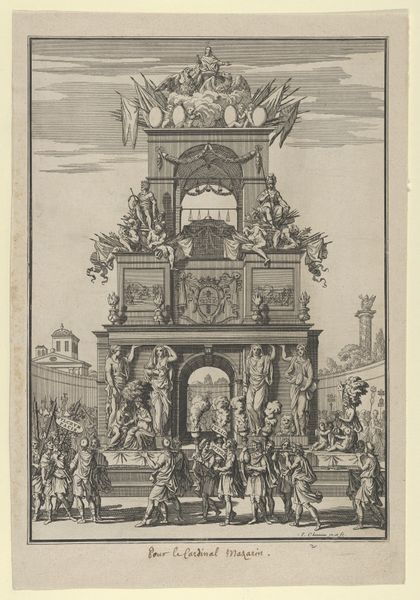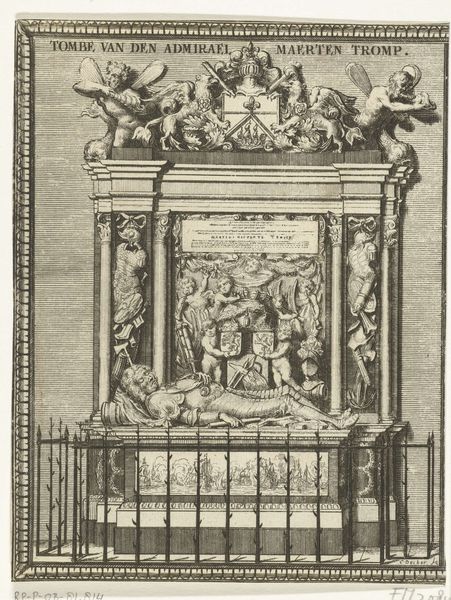
Zuilengang van de keizers; intocht van Ferdinand te Antwerpen in 1635 (nr. 16) (rechterhelft) 1639 - 1641
0:00
0:00
print, engraving
#
baroque
# print
#
figuration
#
line
#
cityscape
#
history-painting
#
academic-art
#
engraving
Dimensions: height 536 mm, width 448 mm
Copyright: Rijks Museum: Open Domain
Curator: Oh, this is grandiose! Look at all that detail, like a fever dream etched in lines. It's unsettling and impressive at the same time. Editor: Indeed. What we have here is the right half of a print entitled "Zuilengang van de keizers; intocht van Ferdinand te Antwerpen in 1635 (nr. 16)," or “Colonnade of the Emperors; Entry of Ferdinand into Antwerp in 1635". The artist, Theodoor van Thulden, created this between 1639 and 1641. It’s an engraving that showcases a historical event, but with a healthy dose of Baroque extravagance. Curator: Baroque, right. That explains the dramatic excess. All those swirls and flourishes, the overwhelming sense of—well, of being *a lot*. It's history as theatre, don't you think? Editor: Precisely. These kinds of prints served as visual propaganda. It depicts a triumphal entry into Antwerp. Note the statues of emperors lining the colonnade, suggesting Ferdinand's legitimacy and power by connecting him to a grand historical lineage. It’s pure image-making. Curator: And image-making for the elite. All this display speaks to a particular kind of power—the kind that wants to be seen, that revels in its own visibility. Do you think the average person could make sense of all those references to imperial history? Editor: Perhaps not every nuance, but the overall message of authority and spectacle would be crystal clear. These entries were carefully orchestrated to impress upon the populace the strength and magnificence of the ruler. Think of it as a public relations campaign, meticulously crafted for maximum impact. And an occasion for a city to flaunt its own importance, to the royal retinue as well. Curator: It's a snapshot of power frozen in ink. The sharp lines, so permanent-looking...almost feels like they wanted to make that power eternal. Is that a reach? Editor: Not at all. The very act of creating a print like this ensures the event lives on, disseminated across Europe through printed copies. The goal wasn’t just to commemorate, but to perpetuate a certain vision of power and governance. Curator: Makes you wonder how accurate this vision is, compared to the day-to-day realities of the time. It's gorgeous, don't get me wrong. But beauty can be a disguise, too. Editor: Art often presents a curated reality, of course. This piece, in its exquisite detail, offers us a glimpse into the politics of image-making, a potent reminder of how power communicates through art. Curator: Indeed, and those swirling flags do their work nicely too! Well, power has never been very humble.
Comments
No comments
Be the first to comment and join the conversation on the ultimate creative platform.
